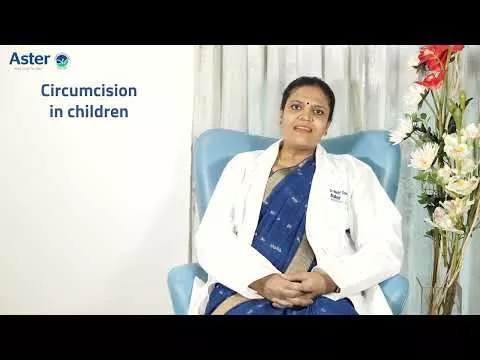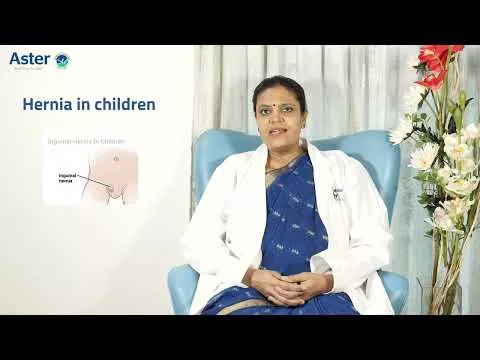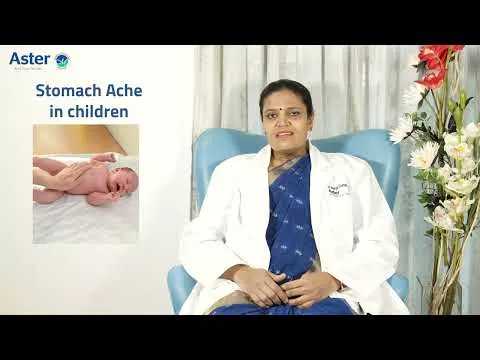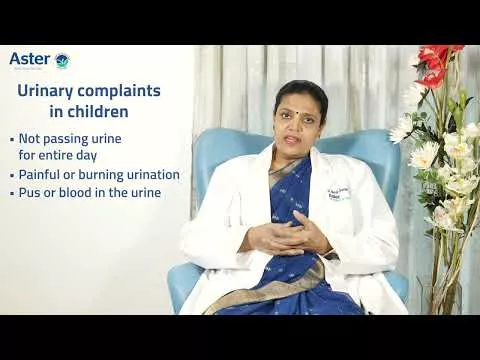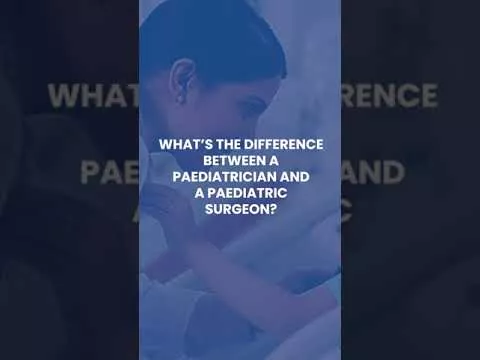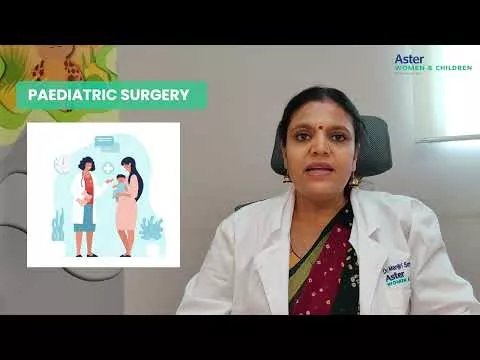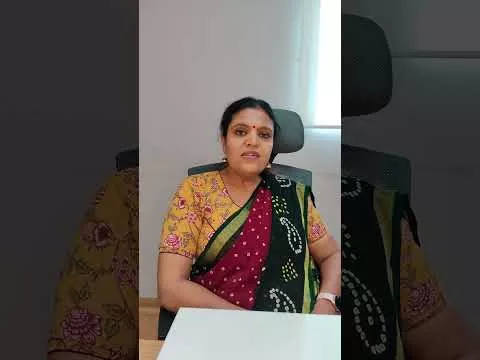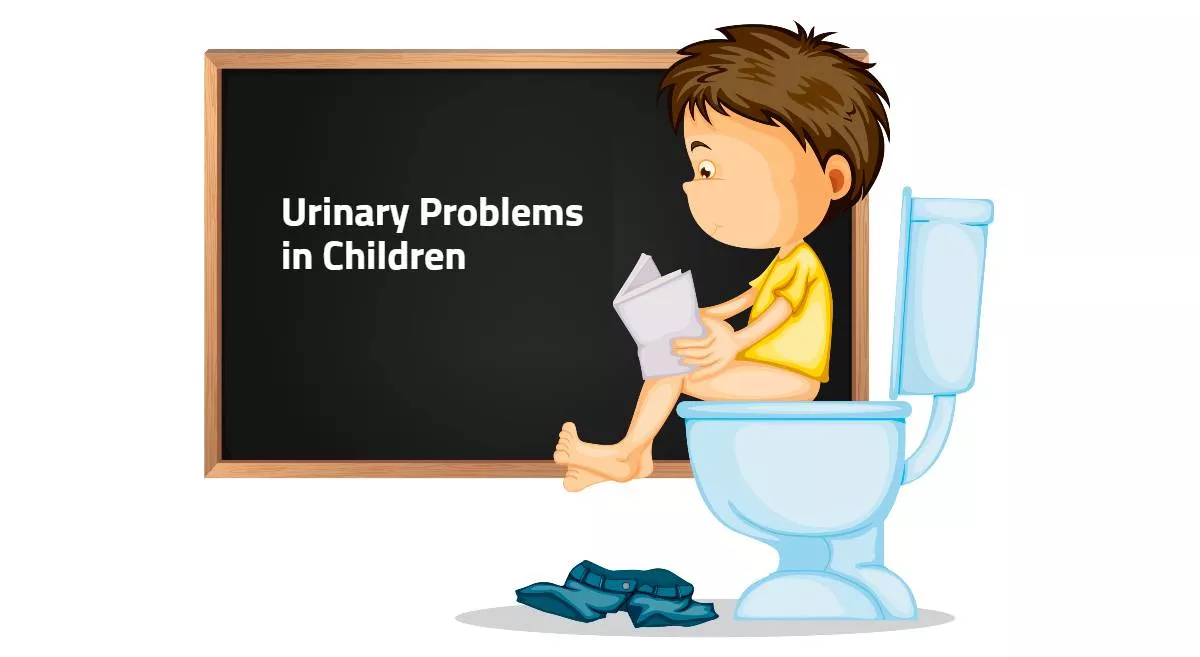The Department of Paediatric Surgery at Aster Women and Children Hospitals offers advanced care, in general paediatric surgery, neonatal surgery, paediatric urology, thoracic surgery, gastrointestinal surgery, minimal invasive surgery, and endoscopy until the age of 18 years. The paediatric surgical patient requires tender care with delicate skills and diligent follow-up as the newborn, baby, toddler grows through adolescence into a mature adult. As paediatric surgeons we learn resilience from children and are grateful for the opportunity to serve them. The Department of Paediatric Surgery is a specialised department offering high-quality care for all surgical problems in neonates, infants, older children and adolescents. The surgical team is led by senior and experienced Consultants, who have been trained in leading hospitals in India and overseas.
The Department also has several follow-up clinics including antenatal counselling for congenital malformations. We have keen enthusiasm about following up on cases until they reach adolescence and, in some instances, even after adulthood where meticulous surgery is required. The department works closely with the Departments of Paediatrics, Neonatology, Radiology and Oncology. A fully functional Neonatal ICU and Paediatric ICU are the main facilities available for critically ill children.
The common problems that are treated by the Paediatric Surgery team include-
- Hernia, hydroceles, undescended testis, phimosis
- Congenital and developmental anomalies
- Burns, trauma and injuries.
Specific expertise for complex surgical problems in children -
- Neonatal surgery
- Paediatric Urology
- Paediatric Gastro surgery
- Paediatric Thoracic surgery
- Paediatric Onco surgery
- Minimal Access surgery including Robotic Surgery
- Paediatric Endoscopy
- Paediatric Bronchoscopy.
Our Doctors
We have some of the best specialists from around the world, they bring years of experience and offer evidence-based treatment to ensure the best care for you.
Health condition speciality
Varicose veins, commonly affecting the legs and feet, are a prevalent condition characterized by swollen and twisted veins. In rural India, more than 30% of senior citizens suffer from varicose veins, posing a significant strain on healthcare resources. These veins often cause discomfort, pain, and aesthetic concerns for those affected. In severe cases, varicose veins can lead to complications such as skin ulcers or vein rupture, exacerbating the impact on an individual's health and overall well-being.
Using Cyanoacrylate Glue Embolization (CAE) therapy to treat varicose veins is a relatively new development in vein care. Comparing this novel process to conventional treatment procedures, there are several clear advantages:
1. **Minimally Invasive Procedure**: Compared to traditional surgery, CAE causes less stress to the body because it just requires little skin incisions or punctures. Patients find this feature especially appealing because it frequently results in shorter recovery times and reduced pain following surgery.
2. **Local anesthetic**: CAE is carried out under local anesthetic, as opposed to conventional surgery, which can call for general anesthesia. This lessens the dangers of general anesthesia while enabling patients to stay conscious and awake during the entire process.
3. **Painless Post-operative Period**: Patients usually have little pain during the healing phase after receiving CAE treatment. Compared to traditional surgical methods, which may cause greater agony during the healing phase, this is a major improvement.
4. **No danger of Nerve harm**: When compared to conventional surgical techniques, CAE therapy reduces the danger of nerve harm. This is so that other tissues and nerves won't be needlessly injured during the operation, which specifically targets the afflicted veins.
5. **Elimination of Postoperative Compression Stockings and Activity Restrictions**: CAE does away with the necessity for patients to wear compression stockings and limit their physical activity throughout the healing phase, in contrast to traditional treatments that frequently call for these measures. Following the surgery, patients can return to their regular activities rather quickly, which expedites their return to their daily routines.
All things considered, the advent of CAE therapy is a noteworthy development in the treatment of varicose veins, providing patients with a more effective, efficient, and safe option. For those afflicted with this prevalent vascular ailment, CAE offers the potential to improve overall patient experience and improve outcomes by addressing the shortcomings of standard surgical procedures.
Renal stones, affecting approximately 10% of the global population, pose significant health risks and challenges worldwide. These crystallized deposits within the kidneys not only cause renal damage but also induce excruciating symptoms such as colic pain, fever, haematuria, and potentially life-threatening complications like sepsis. Hence, prompt diagnosis and intervention are crucial imperatives in mitigating the adverse effects of renal stones.
Diagnosis and Treatment Strategies:
Effective management hinges upon accurate symptom identification and the judicious use of diagnostic modalities. Among these, computed tomography (CT) scans play a pivotal role in confirming diagnoses and devising appropriate treatment plans. The evolution of treatment methodologies has ushered in advanced approaches such as percutaneous nephrolithotomy (PCNL) and retrograde intrarenal surgery (RIRS), both offering minimally invasive alternatives to traditional interventions.
Conclusion:
In essence, the management of renal stones necessitates a multifaceted approach that integrates timely diagnosis, advanced treatment modalities, and patient education. By prioritizing these principles, healthcare providers can mitigate the burdens imposed by renal stones, empower patients to make informed decisions about their care, and ultimately enhance the quality of life for individuals grappling with this prevalent and often debilitating condition.
Cervical spondylosis, also known as cervical disc disease, is a prevalent condition characterized by the degeneration of the cervical spine's discs and vertebrae. This degenerative process can result in a range of symptoms, including neck pain, stiffness, and radiating pain or numbness in the arms, along with occasional weakness of the limbs.
Treatment Options:
The management of cervical spondylosis varies depending on the severity of symptoms and the individual's unique circumstances. Initially, conservative approaches are typically recommended, which may include:
Physical Therapy: Targeted exercises and manual therapy techniques can help improve strength, flexibility, and posture, reducing pain and enhancing overall function.
Pain Medications: Non-steroidal anti-inflammatory drugs (NSAIDs), muscle relaxants, and analgesics may be prescribed to alleviate pain and inflammation associated with cervical spondylosis.
Lifestyle Modifications: Making adjustments to daily activities, ergonomic improvements, and practicing proper body mechanics can help minimize strain on the cervical spine and alleviate symptoms.
Interventional Pain Management:
In cases where conservative measures fail to provide sufficient relief, interventional pain management techniques may be recommended. These procedures, performed under local anesthesia as outpatient procedures, involve minimally invasive approaches to target specific areas of the spine affected by nerve compression or inflammation. Some common interventions include:
Epidural Steroid Injections: Delivering anti-inflammatory medications directly into the epidural space can help reduce pain and inflammation around the affected nerves.
Facet Joint Injections: By injecting a combination of anesthetic and steroid medications into the facet joints, pain relief and improved function can be achieved for patients with facet joint-related pain.
Nerve Blocks: Blocking the transmission of pain signals along specific nerve pathways can provide temporary relief for individuals experiencing severe or persistent pain.
Radiofrequency Ablation: This procedure involves using heat generated by radiofrequency energy to disrupt the function of targeted nerves responsible for transmitting pain signals, offering long-lasting pain relief for some patients.
Advanced Surgical Options:
In cases of severe or refractory cervical spondylosis, surgical intervention may be necessary to alleviate symptoms and restore spinal stability. Surgical options may include:
Spinal Fusion: This procedure involves fusing two or more vertebrae together to stabilize the spine and reduce pressure on affected nerves.
Disc Replacement: In selected cases, damaged cervical discs may be replaced with artificial implants to maintain spinal mobility while alleviating pain and dysfunction.
Conclusion:
Cervical spondylosis can significantly impact an individual's quality of life, but with timely diagnosis and appropriate treatment, many patients can find relief from their symptoms and regain function. At Aster MIMS Kannur, we offer a comprehensive range of conservative and advanced treatment options, including interventional pain management techniques and state-of-the-art surgical procedures, to help individuals effectively manage cervical spondylosis and achieve optimal outcomes. If you or a loved one are experiencing symptoms of cervical spondylosis, don't hesitate to reach out to our expert team for personalized care and guidance.
Lumbar spondylosis, also known as Lumbar Disc Disease or Disc Prolapse, is a degenerative condition that affects the lower spine, particularly the lumbar region. This condition is characterized by the wear and tear of spinal discs and facet joints, often resulting in a spectrum of symptoms including lower back pain, stiffness, numbness, reduced range of motion, weakness in the legs, and even urinary symptoms.
Treatment Options:
Treatment for lumbar spondylosis is tailored to the severity of the condition and the individual's specific needs. Initially, conservative approaches are typically recommended, including:
- Physical Therapy: Targeted exercises and manual therapy techniques can help improve strength, flexibility, and posture, thereby reducing pain and enhancing overall function.
Pain Medications: Nonsteroidal anti-inflammatory drugs (NSAIDs), muscle relaxants, and analgesics may be prescribed to alleviate pain and inflammation associated with lumbar spondylosis.
Lifestyle Modifications: Incorporating regular exercise, maintaining a healthy weight, and practicing proper body mechanics can help minimize strain on the lumbar spine and alleviate symptoms.
Surgical Intervention:
In cases where conservative treatments fail to provide adequate relief, or if there are neurological complications such as nerve compression, surgical interventions may be necessary. One advanced surgical technique for lumbar spondylosis is Percutaneous Endoscopic Lumbar Discectomy (PELD). This minimally invasive procedure involves inserting a thin tube with a camera and surgical tools through a small incision. PELD offers several advantages, including reduced tissue damage, faster recovery times, lower risk of infection, and less post-operative pain compared to traditional open surgery.
Minimally Invasive Pain Management:
In addition to surgical options, minimally invasive pain and spine interventions can play a crucial role in managing symptoms associated with lumbar spondylosis. Procedures such as epidural steroid injections, nerve root blocks, radiofrequency ablation, and spinal cord stimulation target specific pain pathways or nerves, providing effective pain relief and improving overall function for individuals with lumbar spondylosis.
Conclusion:
Navigating lumbar spondylosis requires a comprehensive approach that considers the individual's symptoms, severity of the condition, and treatment goals. By incorporating conservative treatments, advanced surgical techniques, and minimally invasive pain management procedures, healthcare providers can effectively manage symptoms and improve quality of life for patients with lumbar spondylosis. If you or a loved one are experiencing symptoms of lumbar spondylosis, consult with a healthcare professional for personalized evaluation and treatment options.
Lumbar spondylosis, also known as Lumbar Disc Disease or Disc Prolapse, is a degenerative condition that affects the lower spine, particularly the lumbar region. This condition is characterized by the wear and tear of spinal discs and facet joints, often resulting in a spectrum of symptoms including lower back pain, stiffness, numbness, reduced range of motion, weakness in the legs, and even urinary symptoms.
Treatment Options:
Treatment for lumbar spondylosis is tailored to the severity of the condition and the individual's specific needs. Initially, conservative approaches are typically recommended, including:
- Physical Therapy: Targeted exercises and manual therapy techniques can help improve strength, flexibility, and posture, thereby reducing pain and enhancing overall function.
Pain Medications: Nonsteroidal anti-inflammatory drugs (NSAIDs), muscle relaxants, and analgesics may be prescribed to alleviate pain and inflammation associated with lumbar spondylosis.
Lifestyle Modifications: Incorporating regular exercise, maintaining a healthy weight, and practicing proper body mechanics can help minimize strain on the lumbar spine and alleviate symptoms.
Surgical Intervention:
In cases where conservative treatments fail to provide adequate relief, or if there are neurological complications such as nerve compression, surgical interventions may be necessary. One advanced surgical technique for lumbar spondylosis is Percutaneous Endoscopic Lumbar Discectomy (PELD). This minimally invasive procedure involves inserting a thin tube with a camera and surgical tools through a small incision. PELD offers several advantages, including reduced tissue damage, faster recovery times, lower risk of infection, and less post-operative pain compared to traditional open surgery.
Minimally Invasive Pain Management:
In addition to surgical options, minimally invasive pain and spine interventions can play a crucial role in managing symptoms associated with lumbar spondylosis. Procedures such as epidural steroid injections, nerve root blocks, radiofrequency ablation, and spinal cord stimulation target specific pain pathways or nerves, providing effective pain relief and improving overall function for individuals with lumbar spondylosis.
Conclusion:
Navigating lumbar spondylosis requires a comprehensive approach that considers the individual's symptoms, severity of the condition, and treatment goals. By incorporating conservative treatments, advanced surgical techniques, and minimally invasive pain management procedures, healthcare providers can effectively manage symptoms and improve quality of life for patients with lumbar spondylosis. If you or a loved one are experiencing symptoms of lumbar spondylosis, consult with a healthcare professional for personalized evaluation and treatment options.
Advanced Technology & Facilities
Well equipped with the latest medical equipment, modern technology & infrastructure, Aster Hospital is one of the best hospitals in India.
- Paediatric esophagoscopes, gastroscopes, bronchoscopes and colonoscopes.
- Paediatric and neonatal resectoscopes & cystoscopes.
- Paediatric and neonatal laparoscopic instrumentation.
- Robotic instrumentation
- State of the art Pathology, Microbiology and Histopathology with special immunohistochemistry analysis.
- Intensive care units that are back up with fully functional Neonatal Intensive Care
- Unit (NICU) and Paediatric Intensive Care Unit (PICU).
- A range of Paediatric Radiology services that include conventional radiology with an image intensifier for contrast studies, and sophisticated Ultrasounds, MRCP, CT scan, MRI, Nuclear scan, PET-CT scan etc.
- Intraoperative radiological services.
FAQs
Want to find out more about the treatment? The answer to your questions can be found below.
What is pediatric surgery?
Pediatric surgery is a specialized branch of medicine that focuses on the surgical treatment of infants, children, and adolescents, ranging from newborns to 18-year-olds. Pediatric surgeons must have a specialization in pediatric surgery and be able to use the latest surgical techniques to successfully treat pediatric patients. Pediatric surgeons must also be able to work in a team environment with other healthcare professionals to provide the best care possible for their young patients.
What is the difference between pediatric surgery and adult surgery?
Children's surgery differs from adult surgery on many levels, including anatomy, physiology, and psychology. Children have different problems- unlike adults, their treatment differs depending on their age and response to anesthesia and medication. Pediatric surgeons must also be able to recognize and address any psychological issues that may be present in young patients. Additionally, children heal faster than adults, so pediatric surgeons must be able to react quickly to potential complications.
How can a parent prepare their child for surgery?
The parent can help prepare their child for surgery by explaining the procedure in age-appropriate terms, reassuring them that they will be safe and cared for, and ensuring that they understand what to expect before and after the surgery. Doing so helps reduce anxiety and fear that the child may experience, while also making them more cooperative and less likely to resist the medical staff. This can make the procedure smoother and safer for both the child and the medical team.
How can a parent support their child during the recovery process?
The parent can support their child during the recovery process by providing emotional support. Following post-surgery care instructions can aid to prevent any complications. Ensuring the child receives appropriate pain management can serve to make the recovery process more comfortable. A healthy diet and adequate hydration can help to boost the immune system and speed up healing. Providing emotional support can help to reduce the child's stress and anxiety, which can lead to faster healing.
What qualifications do pediatric surgeons have?
Pediatric surgeons are medical doctors who have completed a residency in general surgery followed by specialized training in pediatric surgery. They are board-certified in both general surgery and pediatric surgery and have extensive experience in the surgical treatment of children. Pediatric surgeons must also have experience in pediatric urology, pediatric oncology, and pediatric medical emergency. They must be able to diagnose and manage both acute and chronic conditions in children. In addition, they must know the unique physiology of children and the special techniques and equipment used in treating them.
What are some of the most common pediatric surgeries?
Some of the most common pediatric surgeries cater to - swelling and lesions on the body, ear deformities, abnormal mass or swelling in the body, chest wall abnormalities, lung lesions, diaphragm defects, bowel atresia, lesions in the stomach, intestine, pancreatic lesions, liver lesions, kidney lesions, VUR, PUJO, VUJO, bladder lesions, hypospadias, epispadias, penile lesions, limb abnormalities, ano rectal malformations, teratomas, hepatoblastoma, neuroblastoma, Wilm's tumor, vascular malformations, hernia malformations, hernia r repair, appendectomy, circumcision, and correction of congenital abnormalities such as cleft lip and palate. These surgeries can relieve pain, infections, and breathing problems. Additionally, they can correct physical deformities that can affect a child's appearance and social development.
What are the risks associated with pediatric surgery?
Like any surgery, pediatric surgery carries certain risks, including bleeding, infection, and complications related to anesthesia. However, with proper preparation and care, the risk of these complications can be minimized. It's imperative to get detailed information from your healthcare provider about the potential risks and benefits of the procedure, as well as any possible side effects. Additionally, the surgeon should review the patient's old and current medical records since the child has a long life ahead of him or her. These details will be needed to discuss future treatment and to determine whether any medications might increase the risk of complications.
How long does it take for a child to recover from pediatric surgery?
The recovery time for pediatric surgery depends on the type of surgery and the child's condition. In general, children are more labile than adults and may require intensive care post-operatively. They require continuous monitoring and a rapid action team to address any issues.
What are the long-term effects of pediatric surgery?
The long-term effects of pediatric surgery depend on the type of surgery and the child's condition. In some cases, children may experience complications or require additional surgeries. The mental trauma of a hospitalization and surgical procedure is often underestimated. This requires a case-by-case approach to informing the child and helping the child recover. It is critical to discuss the risks and potential long-term effects of any surgery with a pediatric surgeon before deciding to proceed. Follow-up visits with the doctor should also be scheduled to monitor the child's progress and address any potential issues.
What should parents do if they have concerns about their child's surgery?
Parents should communicate any concerns they have about their child's surgery with their child's surgeon and healthcare team. They can also seek a second opinion or consult with other healthcare professionals to ensure they are making informed decisions about their child's care. This is important because it allows them to get a complete understanding of the risks and benefits of the surgery, and to make sure that the best possible care is provided for their child. It also helps them to feel secure in their decision and to feel like they are being heard and respected by their healthcare team.
Blogs
The source of trustworthy health and medical information. Through this section, we provide research-based health information, and all that is happening in Aster Hospital.





